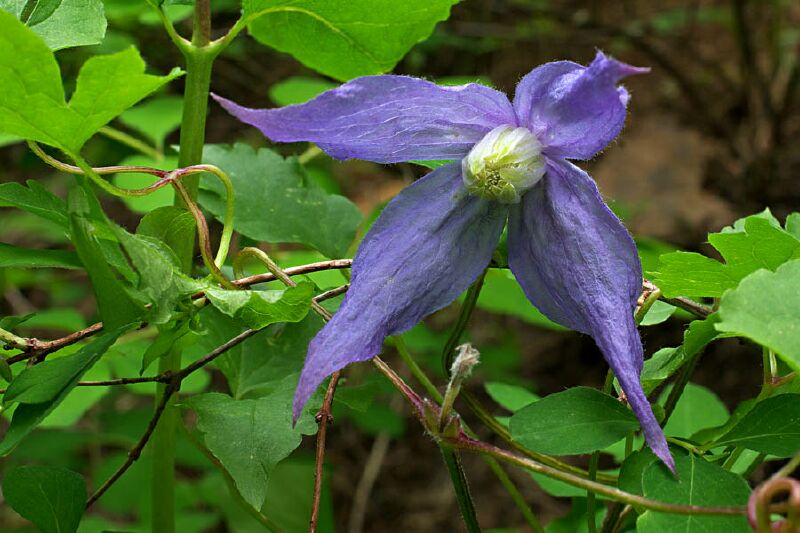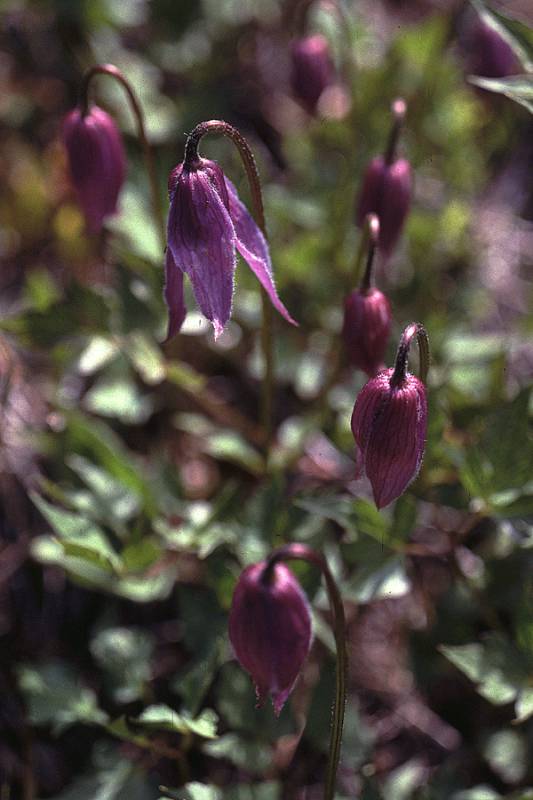Clematis occidentalis
Clematis occidentalis var. dissecta
Columbia clematis, rock clematis, Columbia virgins-bower
Columbia clematis
Leaves opposite, ternate, firm but not succulent, the leaflets lance-ovate to triangular or sub-orbicular, lobed or unlobed, the margins entire or toothed.
Leaves lobed with crenate-serrate leaflets 15-6.5(-9) cm long, terminal, usually deeply lobed or ternate.
Flowers solitary, terminal on short axillary branches on naked peduncles 5-15 cm. long;
sepals usually 4, ovate-lanceolate to elliptic-oblong, acuminate, 3.5-6 cm. long, violet-blue to pale blue;
petals none;
stamens numerous, the outer ones often sterile;
styles 3-6 cm. long, plumose, persistent.
Achenes short-pubescent.
Clematis occidentalis
Clematis occidentalis var. dissecta
Occurring east of the Cascades crest in Washington; British Columbia to Oregon, east to Saskatchewan and Wyoming.
Endemic to Wenatchee Mountains and nearby ranges, Chelan, Kittitas, Okanogan Counties, Washington.
- Local floras:
BC,
OR,
WA
- Local Web sites:
Flora NW,
PNW Herbaria
WildflowerSearch
iNaturalist (observations)
USDA Plants Database
- LBJ Wildflower Center
- SEINet
- Plants of the World Online
- Encyclopedia of Life
- Wikipedia
- Google Image Search



